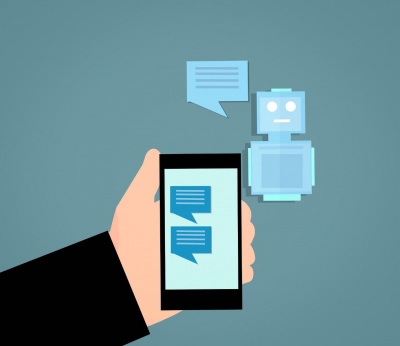
A chatbot, or chatterbot, is a computer program designed to stimulate conversation with humans. A chatbot usually has textual conversations with users, guiding them through simple processes. Sometimes, it is hard to identify who you are chatting with – a human or a robot. Many websites today use chatbots.
The term chatterbot was originally coined by computer scientist Michael Mauldin in 1994. Mauldin is the creator of Verbot, a popular chatterbot program.
The first conversational bot, however, was written in the U.S. in 1966. Implemented by Joseph Weizenbaum, a computer scientist of the Massachusetts Institute of Technology, the chatbot was called Eliza. The chatbot was so authentic that it misled many people it was human.
Advantages of a chatbot
Chatbots are a great help for businesses, helping improve customer service and personalizing communication. However, for a user, a chatbot can be a boon when it comes to getting immediate responses for queries. Most chatbots are operational 24×7, meaning you can ask it a question even at two in the morning and you will be served a response. A chatbot also comes in handy when you don’t have the patience to read through the Frequently Asked Questions. Most chatbots are equipped with answering the FAQs.
Chatbots are also linked to human customer service professionals. If it cannot answer your query any further, it will put you through to a professional, thereby ensuring seamless customer service.
How do chatbots work?
Depending on the purpose they are designed for, chatbots can be divided into two groups – simple, and trained/smart.
Simple chatbots work according to pre-programmed commands.
Usually, a developer writes a list of keywords and command for the computer program to look for and execute. When a user chats with such a bot, if the keyword is present, the bot will execute the command. If not, it might say something like “Sorry, I do not understand”.
A smart chatbot, on the other hand, relies on artificial intelligence to communicate with users. Instead of pre-programmed answers, this bot will offer you a list of suggestions based on what you key in. The smart bot also stores all the words and sentences you use for later processing to improve on its responses.
Chatbots and the Turing test
While chatbots are highly intelligent, they haven’t passed the Turing test as of 2019. The Turing test, developed in the 1950s by Alan Turing, is a test of a machine’s ability to exhibit intelligence equivalent to or indistinguishable from humans. Simply put, a human judge has a conversation with a human and a chatbot. If he can identify the machine, the chatbot doesn’t pass the Turing test.
Picture Credit : Google
